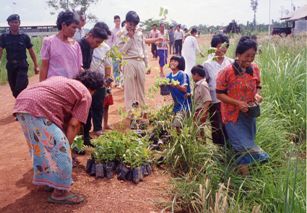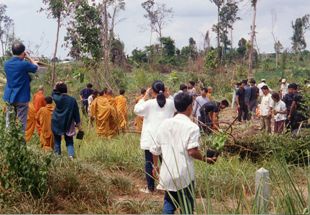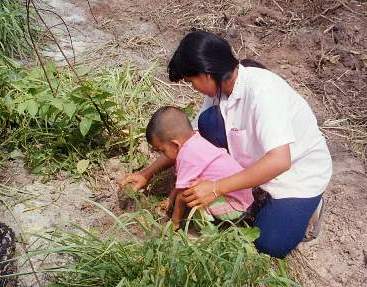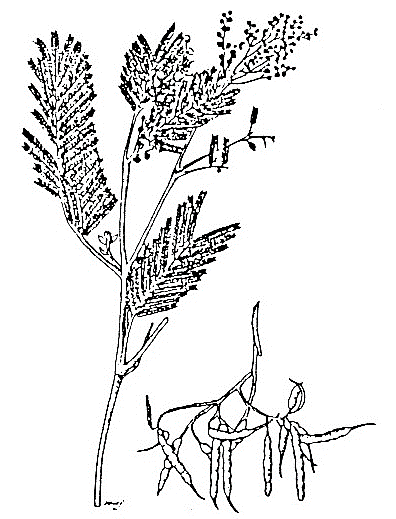


Acacia mearnsis
Black wattle
 Origin
Origin
South and east Australia
Ecology
Annual rainfall: 400-1600mm.
Normal temp range: 2-26°C.
Altitude range: up to 2500m.
Seasonal adaptability: 2-3 months dry season and moderate frost resistance.
Soils: well-drained, moist, valley alluvial, forest podzols, sandy loams of acid to neutral pH and low to moderate fertility. Does not do well on calcareous soils.
Light requirement: light-demanding, shade tolerant when older.
Description
Height at maturity: 6-20m.
Diameter at breast height (1.3m) at maturity: 40cm.
Form: short bole with crooked stem and low branching when open growth, straighter in plantation.
Coppicing ability: poor.
Growth: on a good site 1m/year in height and 2.5cm/year in diameter for the first 10 years.
Other: a small to medium-sized evergreen tree with dark fissures bark in older trees. Flower scluster pale yellow and globular, 10-20 clusters per stem, in leaf axis or terminal. Leaves feathery bipinnate, 8-15cm long.
Primary advantages
Nitrogen fixing, fast growth, good fuelwood and tannin source. Suitable for soil protection on poor soils.
Primary disadvantages
Fire sensitive when young, invasive, not windfirm, not suitable for alkaline soils.
Products and yields
Wood products: fuelwood and charcoal, mine props, poles, low quality pulp. Production 10-25m3/ha/year. Wood density 0.55-0.85.
Fuelwood: 4690-7800 kcal/kg.
Other: bee forage, ornamental, tannin from bark (35-30% tannin).
Propagation
Seedlings, direct seeding, natural regeneration.
Seed treatment
Store dry, cold and airtight. Pretreatment: mechanical scarification, or immerse in boiling water then allow to cool.
Management
Pollarding on 8-10 year rotation. Coppicing is weak.
Agroforestry uses
Shelterbelts, erosion control on poor soils and steep slopes, homegardens, live fence, intercropping when young, pastoral systems, green manure, shade trees for tea.